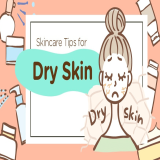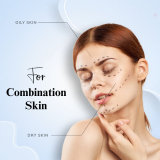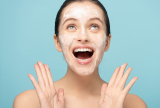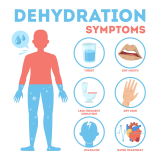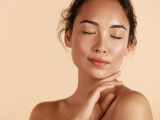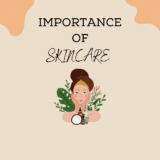Are you tired of dealing with oily skin? Our website offers expert advice, tips, and product reviews to help you achieve a clearer, more balanced complexion. ...
Discover effective ways to prevent and treat dry skin on our website. Learn about the causes and symptoms of dry skin, and get expert tips on skincare, ...
Combination skin can be challenging to manage, with some areas of your face dry while others are oily. Our comprehensive guide will help you understand your ...
Discover the best face wash for your skin type and achieve a glowing complexion with our expert recommendations. From oily to sensitive skin, we'll guide you ...
Discover the causes of dark circles and effective prevention and treatment strategies with our expert guide. Learn how to banish dark circles for good and ...
Learn everything you need to know about blemished skin, from its causes and types to effective treatment options and prevention tips. Our comprehensive guide ...
Discover effective strategies for preventing and treating acne with our comprehensive guide. Learn about the causes of acne, different types of acne, and ...
Stay hydrated for a healthy body and glowing skin! Learn the importance of hydration, its benefits for your body and skin, and tips to increase water intake ...
Discover the secrets to achieving a radiant complexion with our ultimate guide to glowing skin. From diet and lifestyle habits to skincare tips and ...
Transform your skin with our expert exfoliation tips and techniques. lumispareview's comprehensive guide covers everything you need to know about exfoliation, ...
Unlock the benefits of deep cleansing and see real results with our before and after photos. lumispareview.com credible and compelling content will guide you ...
Discover the benefits of incorporating Vitamin C in your skincare routine and learn when is the best time to use it. Our comprehensive guide covers everything ...
Get expert advice on when to apply sunscreen in your skincare routine for optimal protection against harmful UV rays. Learn about the best time to apply ...
Looking to build an effective skincare routine backed by expert evidence? Our website has got you covered. Discover the latest tips, tricks, and science-based ...
Parsing through the beauty aisle or reviewing skin care ingredients lists can be incredibly confusing if you aren’t sure what you’re looking for. Without ...
One of my favorite parts of running this blog is sharing different products that really work – like finding anti-aging skin care devices that delivers results. ...
Some people may cringe when they hear the word moist, but when it comes to moisturizers, we've got nothing but love. For many, it's the final step in a ...
Skin redness and inflammation sucks. When my skin gets really inflamed, I tell people it feels like a sunburn and a bruise combined. And, one of the hardest ...
So you’re trying to figure out how to shave your face, eh? Maybe you’ve seen all of the IG and TikTok videos of people shaving off their peach fuzz to fix ...
Although ageLOC Transformation is not targeted specifically for those with Rosacea, this system of products has been designed for all skin types, including ...


